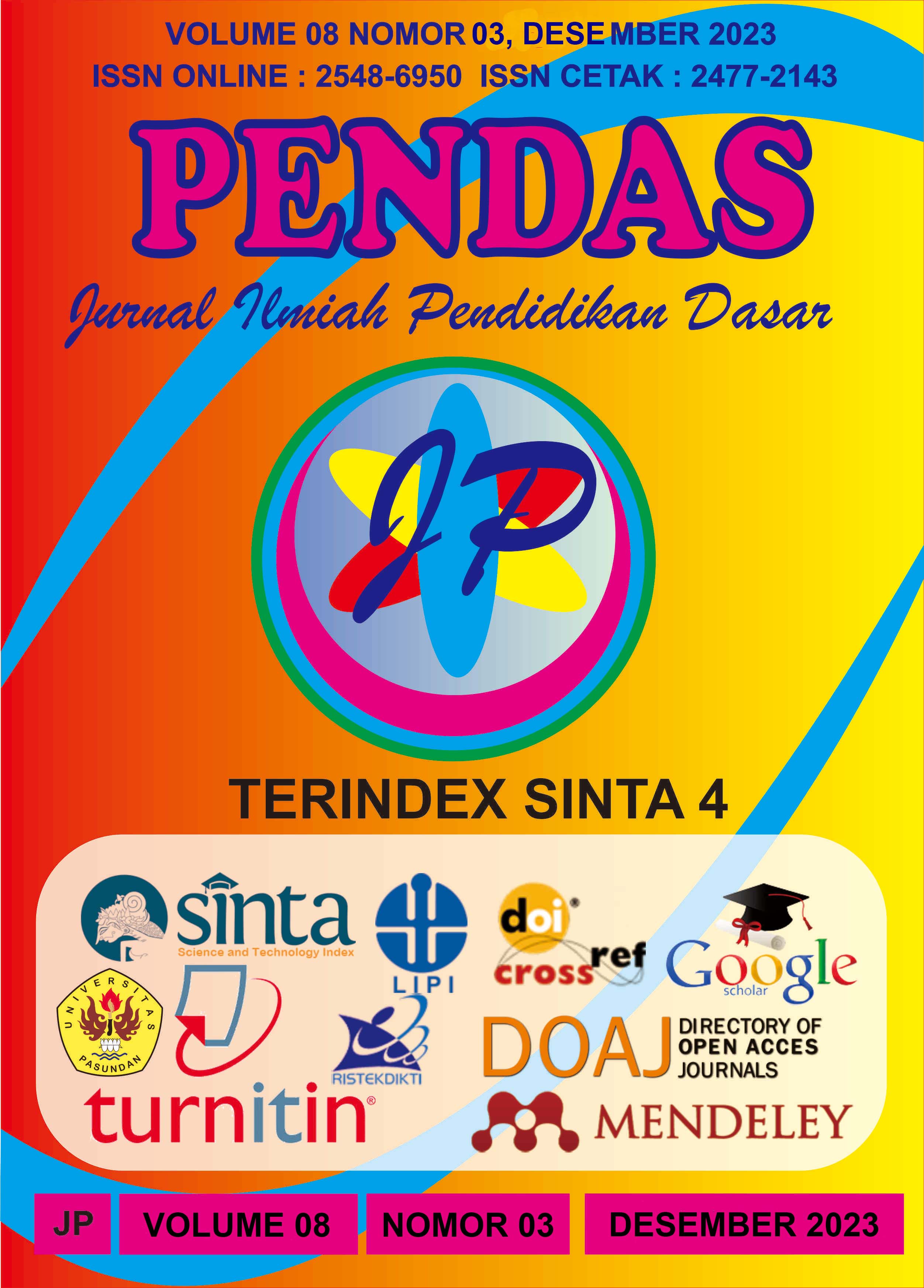ANALYSIS OF FLEXIBLE LEARNING IN THE BASIC ENGLISH COURSE OF TRI LEARNING HOUSE
DOI:
https://doi.org/10.23969/jp.v8i3.10697Keywords:
Flexible, Learning, EnglishAbstract
This research aims to describe the analysis of flexibility in Tri Learning House including increased shared motivation to learn English, comfortable facilities, and freedom in time and place. The method used is descriptive qualitative as it allows for a clear description of the results. The data were collected through flexible learning analysis from interviews, with students at Tri Learning House. Flexible learning analysis was conducted through interviews, photos, and notes from students at Tri Learning House. Instruments are the researcher herself, flexible learning books, articles, tables, notes, and interview results, to be used to identify flexible parts. The findings of this research are: 1) Joint motivation at Tri Learning House: to increase knowledge until students can have added value from others, the new situation when they learn English comfortably character. Furthermore, students can explore their interests and talents based on their abilities, 2) Comfortable facilities, Tri Learning House will provide a pleasant place and completed facilities, becoming a place for information centers and opportunities to develop and develop themselves. 3) Regarding time and place flexibility, students have numerous opportunities to study subjects of their preference, providing them with the freedom to grow and adapt.Downloads
References
Abisado, M. B., Unico, M. G., Umoso, D. G., Manuel, F. E., & Barroso, S. S. (2020). A flexible learning framework implementing asynchronous course delivery for Philippine local colleges and universities. International Journal, 9(1.3).
Adi, B. (2020). Effectiveness Naval Collaboration Flexible Learning (NCFL) Model in Increasing Learning Outcomes The Indonesian Naval Technology College. International Journal of Progressive Sciences and Technologies (IJPSAT), 23(2), 334-342.
ANTA (2003). Flexible Learning Business Planning Framework. Australian Flexible Learning
framework
Artwińska, A., & Mrozik, A. (Eds.). (2020). Gender, generations, and communism in Central and Eastern Europe and Beyond. Routledge.
Benade, Leon."Flexible learning spaces: Inclusive by design?." New Zealand Journal of Educational Studies 54.1(2019): 53-68. Boer, W. d., & Collis, B. (2005). Becoming more systematic about flexible learning: beyond time and distance.
ALT-J, 13(1), 33-48. https://doi.org/10.1080/0968776042000339781
BUß, I. M. K. E. (2019). The relevance of study program structures for flexible learning: an empirical analysis. Zeitschrift für Hochschulentwicklung, 14(3), 303-321.
Kariippanon, K. E., Cliff, D. P., Okely, A. D., & Parrish, A. M. (2020). The ‘why’and ‘how’of flexible learning spaces: A complex adaptive systems analysis. Journal of Educational Change, 21, 569-593.
Kilag, O. K. T., Lechadores, V. M. B., Tolin, J. E., Pahayahay, D. Q., Torrefiel, A. P., & Calzada, J. R. D. (2023). Moving beyond the new normal: Understanding Flexible Learning Options (FLOs) on the parameters of Basic Education Learning Continuity Plan (BE-LCP). Science and Education, 4(2), 866-873.
Müller, C., & Mildenberger, T. (2021). Facilitating flexible learning by replacing classroom time with an online learning environment: A systematic review of blended learning in higher education. Educational Research Review, 34, 100394.
Miu, E., Gulley, N., Laland, K. N., & Rendell, L. (2020). Flexible learning, rather than inveterate innovation or copying, drives cumulative knowledge gain. Science advances, 6(23), eaaz0286.
Moloi, Kholeka Constance. "How can schools build learning organisations in difficult education contexts?." South African journal of education 30.4 (2010): 621-633.
Naidu, S.(2016). The case for open educational practice. Distance Education, 37, 1-3. doi:10.1080/01587919.2016.1157010 [Taylor & Francis Online], [Web of Science ®],
Naidu, S. (2017). Openness and flexibility are the norm, but what are the challenges? Distance Education, 38, 1–4 doi:10.1080/01587919.2017.1297185 [Taylor & Francis Online], [Web of Science ®], [Google Scholar]
Sosutha, C., Wijakkanalan, S., & Nuangchalerm, P. (2021). Exploring possibility of flexible learning management for teacher preparation program. Solid State Technology, 64(2), 2270-2276.
Tarrayo, V. N., Paz, R. M. O., & Gepila Jr, E. C. (2023). The shift to flexible learning amidst the pandemic: the case of English language teachers in a Philippine state university. Innovation in Language Learning and Teaching, 17(1), 130-143.
Talosa, A. D., Javier, B. S., & Dirain, E. L. (2021). The flexible-learning journey: phenomenological investigation of self-efficacy influencing factors among higher education students. Linguistics and Culture Review, 5(S3), 422-434.
Licayan Jr, R., Herrera, A. B., Bersano, M. S., & Idul, R. G. R. (2021). Readiness of Students in Flexible Learning Modality: A Convergent Parallel Mixed-Methods Study. Online Submission, 2(4), 514-530.
Ulanday, M. L., Centeno, Z. J., Bayla, M. C., & Callanta, J. (2021). Flexible learning adaptabilities in the new normal: E-learning resources, digital meeting platforms, online learning systems, and learning engagement. Asian Journal of Distance Education, 16(2).
Veletsianos, G., & Houlden, S. (2019). An analysis of flexible learning and flexibility over the last 40 years of Distance Education. Distance Education, 40(4), 454-468.
Wahyuningtyas, R., Isynuwardhana, D., Rismayani, R., & Gunawan, I. (2022). The Awareness and Implementation of MBKM Program as Flexible Learning in Faculty. Humaniora, 13(3), 231-239.
Downloads
Published
Issue
Section
License
Copyright (c) 2023 Pendas : Jurnal Ilmiah Pendidikan Dasar

This work is licensed under a Creative Commons Attribution 4.0 International License.



















